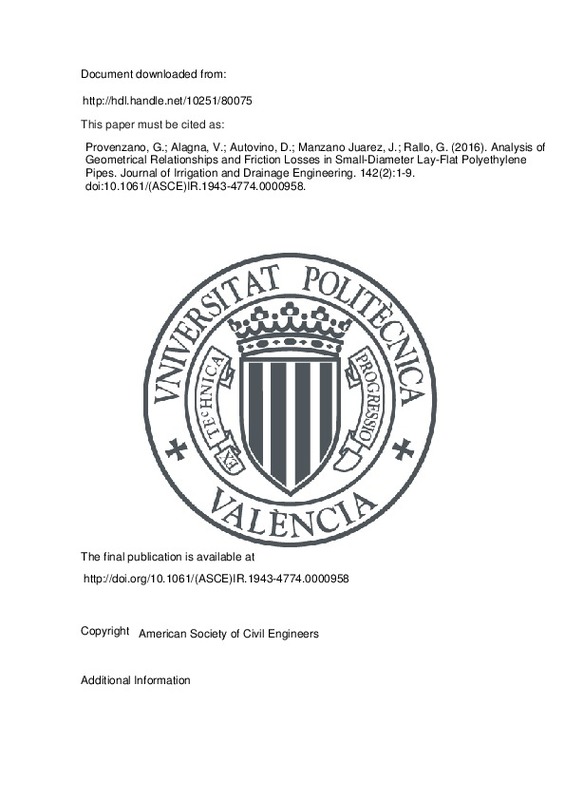JavaScript is disabled for your browser. Some features of this site may not work without it.
Buscar en RiuNet
Listar
Mi cuenta
Estadísticas
Ayuda RiuNet
Admin. UPV
Analysis of Geometrical Relationships and Friction Losses in Small-Diameter Lay-Flat Polyethylene Pipes
Mostrar el registro completo del ítem
Provenzano, G.; Alagna, V.; Autovino, D.; Manzano Juarez, J.; Rallo, G. (2016). Analysis of Geometrical Relationships and Friction Losses in Small-Diameter Lay-Flat Polyethylene Pipes. Journal of Irrigation and Drainage Engineering. 142(2):1-9. https://doi.org/10.1061/(ASCE)IR.1943-4774.0000958
Por favor, use este identificador para citar o enlazar este ítem: http://hdl.handle.net/10251/80075
Ficheros en el ítem
Metadatos del ítem
| Título: | Analysis of Geometrical Relationships and Friction Losses in Small-Diameter Lay-Flat Polyethylene Pipes | |
| Autor: | Provenzano, Giuseppe Alagna, Vincenzo Autovino, Dario Rallo, Giovanni | |
| Entidad UPV: |
|
|
| Fecha difusión: |
|
|
| Resumen: |
[EN] The use of lay-flat polyethylene pipes to irrigate horticultural crops has been receiving widespread attention in the last decade, due to the significant improvements in their hydraulic performance, their potentially ...[+]
|
|
| Palabras clave: |
|
|
| Derechos de uso: | Reserva de todos los derechos | |
| Fuente: |
|
|
| DOI: |
|
|
| Editorial: |
|
|
| Versión del editor: | http://doi.org/10.1061/(ASCE)IR.1943-4774.0000958 | |
| Código del Proyecto: |
|
|
| Agradecimientos: |
The research was cofinanced by Universita di Palermo (FFR 2011) and Ministero dell'Istruzione, dell'Universita e della Ricerca (PRIN 2010). All the authors setup the research and discussed the results. V. Alagna and D. ...[+]
|
|
| Tipo: |
|







![[Cerrado]](/themes/UPV/images/candado.png)


